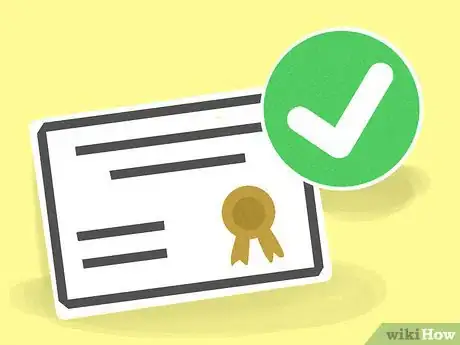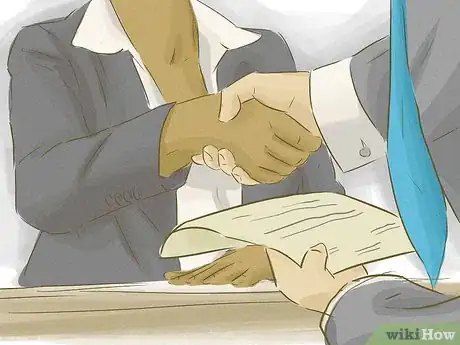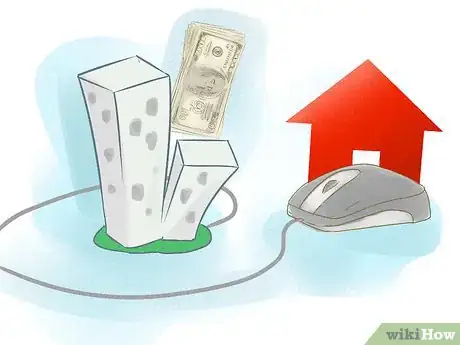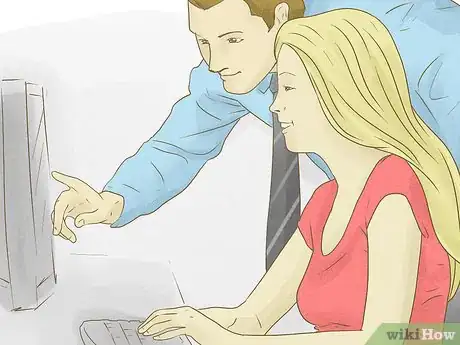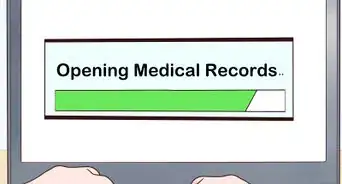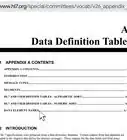This article was co-authored by Marty Morales. Marty Morales is a Professional Massage Therapist and the Founder and Owner of the Morales Method, a manual therapy and body conditioning business based in the San Francisco Bay Area and in Los Angeles, California. Marty has over 16 years of massage therapist experience and over 13 years of experience educating others on the best practices for massage therapy. Marty has over 10,000 hours of private practice logged and is a Certified Advanced Rolfer and Rolf Movement Practitioner, CMT. He has an MBA in Finance from Loyola Marymount University, Los Angeles.
There are 8 references cited in this article, which can be found at the bottom of the page.
wikiHow marks an article as reader-approved once it receives enough positive feedback. In this case, 96% of readers who voted found the article helpful, earning it our reader-approved status.
This article has been viewed 177,513 times.
A massage therapist enhances a person’s health and well-being by manually manipulating their soft body tissues. People go to massage therapists to reduce stress and anxiety, to relax their muscles and to rehabilitate any injured muscles or areas of their body.[1] You may be a practicing massage therapist who is ready to branch out on your own or you may be new to the profession and looking to start your own business. Though starting your own business as a massage therapist can be a big step, many massage therapists work for themselves, as it allows you to have a flexible work schedule and to maximize your profits.
Steps
Getting the Necessary Certifications and Licenses
-
1Complete your massage therapy certification. Before you can start a massage therapy business, you will need to complete massage therapy training and receive a certification as proof you have completed the necessary courses. A certification in massage therapy practice is considered an entry level qualification in the massage industry.[2] You can receive certification through the National Certification Board for Therapeutic Massage and Bodywork (NCBTMB).[3]
- There are many different types of massage therapy you can focus on and specialize in, such as remedial massage therapy or sports massage therapy. Though you may decide to specialize, you should be certified in extensive training on the essential techniques of massage, and have practicum hours at a clinic to get hands on experience.
- Most states in the U.S. require certification and licensing in order to register as a certified massage therapist. Alaska, Kansas, Montana, Oklahoma, and Wyoming are the only states that do not regulate massage therapists.
-
2Apply for a business license. You should check with your local state laws on business registration to determine if you need a business license. Some states require you to obtain a business license if you sell massage therapy products in addition to massage therapy services. As a certified practitioner, you may also be required to obtain an “Art of Healing” license. You can find more information on business licenses by talking to the State Department of Revenue and Consumer Affairs, the county clerk, city hall, or the regulatory agency for massage therapy in your state or province. [4]
- Reach out to your local small business association for more detailed information on the licensing laws required in your state or area, as they can often tell you exactly what is required for your type of business.
- The Associated Bodywork Massage Professionals (ABMP) gives its members access to information about the licensing requirements by state.[5]
Advertisement -
3Join a massage therapy association. Massage therapy associations are a good way to network with other therapist and business owners. They also often offer benefits for their members like business advice, information on certification and licensing, and other opportunities. Some associations require members to pay to join, like the Associated Bodywork Massage Professionals (AMBP), and others have no membership fees.
- A list of massage therapy associations in the U.S. can be found through the National Certification Board for Therapeutic Massage and Bodywork (NCBTMB) website: http://www.ncbtmb.org/.
-
4Get liability insurance. As the owner of a massage therapy business, you will be responsible for covering any liabilities from your clients. You will be working intensely and intimately with your clients so it is important that you protect yourself in the event you are sued by a client or have to claim damages or issues on your insurance. Getting liability insurance ensures you are protected and can afford to fight off a suit in court.[6]
- As well, as a self-employed individual, you will need to provide your own health insurance coverage. You may also want to invest in disability insurance, which will protect you in the event you are injured and cannot work.
Creating a Business Plan
-
1Choose your business name. Once you have sorted out the necessary certification and licensing, you will need to determine your business name. Your business name will act as branding, as it will be printed on your business cards and it will be clearly stated on your website and your social media accounts. Come up with at least two to three options for business names in the event one name is already taken by an existing business.[7]
- You may want to use your given name as your business name, given it is an uncommon or unique name. It’s likely the name “Massage by Carol Lumbort” will not be taken if you live in a small town or area, but a name like “Massage by Carol” could already be taken.
- Try to choose a business name that is unique to you but also easy to remember and read. You may decide to focus on a theme or idea that relates to massage therapy, such as “relaxation” “calming” “rehabilitation” or “releasing”. To avoid overlapping with an existing business name, you may want to then personalize this theme so it is singular to you. For example, “Relaxation with Carol Lumbort” or “Lumbort’s Calming Massage”.
- You can confirm if your business name idea has already been trademarked by searching the United States Patent and Trademark Office database through their website: http://www.uspto.gov/. You can also do a google search of your name ideas to determine if it has already been taken by a massage therapist in your area or by another business.
-
2Decide if you are going to work from home or from an office. Many massage therapists work from their home and do home visits when servicing their clients. However, you may decide that you want to establish a separate office space where you can serve clients on site.[8]
- Working from home means you will have less start up costs and very little overhead costs, as the majority of the profit will be going to you, not your rent or building maintenance. However, you will need to do many jobs at once, from booking clients to stocking supplies to bringing your massage therapy supplies to and from your clients’ homes. You will likely need to also establish a home office in a spare room to keep your business documents organized.
- Renting or leasing a space will require more overhead costs and start-up costs. However, it would also allow you to service more clients at once and possibly turn a larger profit than just working on your own. You may decide to take on a business partner so you can combine your client list or hire other therapists to work in the location.
-
3Outline your start-up expenses. Your business plan should have enough capital or start-up funds to cover several major expenses:[9]
- Occupancy expenses: If you are renting or leasing a space, you will need to budget for your monthly rent and building maintenance costs. You will also need to consider other bills like a phone line, an internet connection, electricity, and heating. If you are using a home office, you may still need to budget for a separate phone line for your business.
- Operating expenses: These are expenses that are required during the day to day operation of your business. You may have operating expenses in the form of a web designer or graphic designer you hire for marketing, an accountant to file your taxes, or a massage therapist professional on contract to help you with your new practice. You may also have operating expenses in the form of materials, such as a ledger for your finances and massage therapy materials like lotions, creams, towels, blankets, and other massage supplies. You should list every possible operations item you can think of, even if it does not come into play later, to ensure you can cover everything in your budget.
- One-time expenses: These are considered “capital” expenses, which you only buy once as an investment in your business. If you have an office space, this may be furniture for the reception area and the massage room, or a computer for booking clients. If you work from home, you may decide to invest in electronic equipment that you will use primarily for your business. You will also need to invest in massage chairs for your office space or a portable massage chair you carry with you to your clients’ homes.
- Marketing expenses: This could be the web designer fee for your business website, the graphic designer fee for designing your brochures and business cards, or other advertising that you invest in to generate business. Marketing is an essential tool for building your clientele and staying profitable as a small business.
-
4Apply for a business loan, if necessary. Once you have drawn up your business plan and considered all of your expenses, you should have a good sense of the start-up capital you require to get your business off the ground. You may then use this as a baseline against your own funds, the funds of an investor, or to apply for a small business loan from your bank.
- Many banks will require a business plan and other financial documents to consider you for a business loan. If you do not qualify for a business loan from your bank, you may want to apply at other banks.
- You may also want to consider talking to investors who may be interested in investing in your business. Use your business plan to convince them that your business is viable and a worthwhile investment for them.
Finding and Retaining Clientele
-
1Create a website for your business. Many massage therapists use their website as a way to communicate with clients, book clients, and retain new clientele. The website does not have to be fancy or state of the art. Instead, go for a basic website that showcases your business name, your certifications, the services you offer, and your unique approach to massage therapy.
- You can hire a web designer to create your website for you, or create your own website using a basic website design program like Wordpress.com or Squarespace.com.
- You can then link your website to other social media accounts like Facebook, Instagram, and Twitter. Your business should also have a Google Plus page with accurate information that appears when your business is googled by clients.
- Some basic massages to offer when you're starting out include Swedish, deep tissue, and sports massages, but you can offer other types, such as Thai or Shiatsu.[10]
-
2Hand out flyers in your community. Though it may seem old-fashioned to hand out flyers, targeting your community with old-fashioned marketing can be beneficial. Go around to local coffee shops and community centers and ask if you can post flyers about your new massage therapist business. This will help you develop business in your area and lead to word of mouth marketing.[11]
-
3Register your business with health funds in your country. Some of your clients may want to claim their massage with their company’s health fund or the government health fund so they can receive a rebate. You will need to make this option available to your clients by contacting each health fund and filling out an application form. You will then receive a provider number that you can use on your clients’ rebates to allow them to claim their massages.[12]
- Offering this option to your clients will likely make your business seem more appealing to clients and keep them coming back to you for your services.
-
4Reward referrals from existing clients. To encourage your clients to continue to use your services, you can start a rewards program where your clients get discounts or bonus treatments once they have booked you a certain number of times or spent a certain amount of money. You can also set up a referrals program where clients are rewarded if they refer a friend to your business.
- Using rewards programs can be a simple and direct way to retain your clients and to attract new clients. However, you should not lean too heavily on these programs, as your massage therapy services should be strong enough to justify return visits from your clients.
References
- ↑ https://www.nwhealth.edu/school-of-massage-therapy/massage-therapy-definition/
- ↑ http://www.sagemassage.edu.au/certificate-iv-massage-therapy-hlt40312/
- ↑ http://www.ncbtmb.org/
- ↑ http://www.massagetherapy.com/articles/index.php/article_id/2061/Set-Up-Your-Business-For-Success
- ↑ https://www.abmp.com/
- ↑ http://www.massagetherapy.com/articles/index.php/article_id/2061/Set-Up-Your-Business-For-Success
- ↑ http://www.massagetherapy.com/articles/index.php/article_id/2061/Set-Up-Your-Business-For-Success
- ↑ https://www.amtamassage.org/career_guidance/detail/167?typeId=6
- ↑ https://www.amtamassage.org/career_guidance/detail/167?typeId=6
- ↑ Marty Morales. Professional Massage Therapist. Expert Interview. 20 December 2019.
- ↑ http://www.sagemassage.edu.au/blog/top-10-tips-for-starting-your-own-massage-therapy-business/#sthash.trMEUl8r.dpuf
- ↑ http://www.sagemassage.edu.au/blog/top-10-tips-for-starting-your-own-massage-therapy-business/#sthash.trMEUl8r.dpuf
- ↑ Marty Morales. Professional Massage Therapist. Expert Interview. 20 December 2019.
About This Article
Before you can start a massage therapy business, you'll need to complete massage therapy training and receive your certification. Once you're certified, you can apply for a business license and get liability insurance so you're ready to start operating your business. As a massage therapist, you can run your business from your home, or you can rent an office space to work with your clients in. If you need some help getting your business off the ground, consider applying for a business loan. To learn how to calculate your startup expenses, scroll down!
